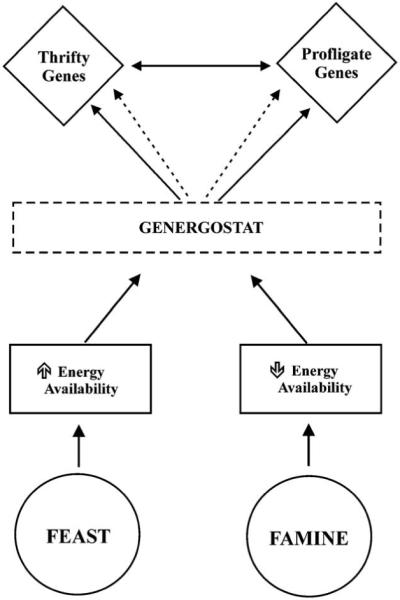Fig. 1.

Genergostat, a single sensor model: This model proposes that thrifty and profligate genes are regulated by a single energy-sensing mechanism which responds differently to states of energy surplus and energy deficit. In a state of positive energy balance (Feast) the increase in energy availability activates (solid lines) an energy-sensing controller (genergostat) which turns on the thrifty genes and deactivates (dotted lines) the profligate ones. These two set of genes also interact with each other (double arrow lines). The system in a state of negative energy balance (Famine) would operate in the opposite direction. “Genergostat” is mediated by two independent, mechanisms activated by states of energy surplus (orex-genergostat) or depletion (anorex-energostat). For example, in a state of negative energy balance (Famine) the decrease in energy availability induces an activation (solid lines) of the anorex-energostat and an inhibition (dotted lines) of the orex-genergostat. The sensor would then activate the catabolic genes (profligate) and inhibit the anabolic (thrifty) ones to exert their catabolic action. A feedback mechanism between these genes can be envisaged to modulate their actions (double arrow lines). The system in a state of positive energy balance (Feast) would operate with a similar but opposite mechanism.
